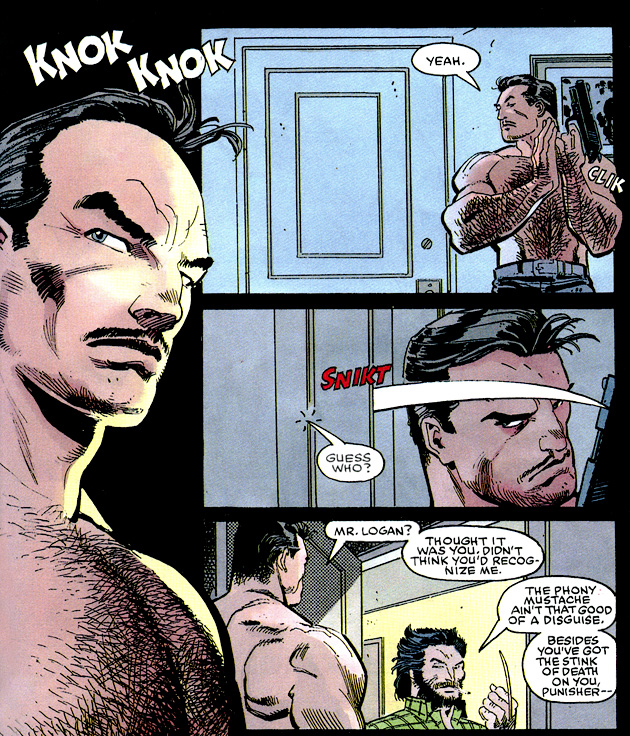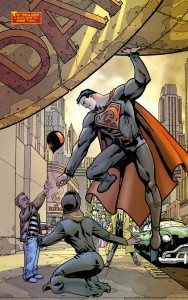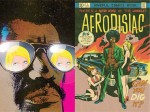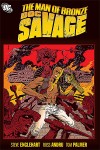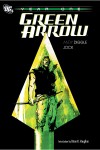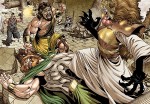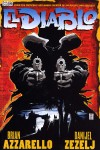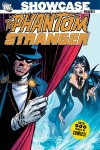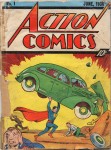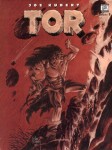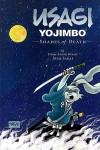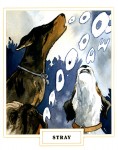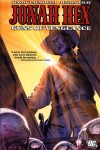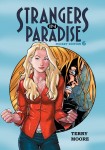 |
|
This review is spoiler free! Skip To The Verdict? »
 “I’m going to tell you some things I never thought I’d tell an American… there were things that were larger than life once… there were super-men…”
“I’m going to tell you some things I never thought I’d tell an American… there were things that were larger than life once… there were super-men…”
Thus begins the story of Kalenov, an ex-soldier from the elite rocket troops, now working in Moscow as a enforcer for hire after the end of the Cold War.
He is a man with a past filled with pain which has left him drunken and just one step away from the road of no return.
He can at least be glad that his past is firmly behind him now. Or so it would appear.
When a girl is kidnapped, Kalenov thinks all is not what it seems. He is drawn back towards his past, with the how and why escaping him.
Enlisting the help of a couple of old friends he sets about unraveling the mystery of this girl. What is so special about her?
The Winter Men was originally pitched as an 8 issue Vertigo series and then later dropped to 6 issues when it was swapped to Wildstorm.
As with a lot of comics, the publishing problems didn’t end there either – there was a gap of over two years between 5th and 6th installments. In the end the sixth (and final) issue was published as an oversized 40 page special.
The book is written by Brett Lewis (Bulletproof Monk) and illustrated by John Paul Leon (Earth X), both of which I was completely unfamiliar with before purchasing this trade.
I read reviews comparing the artwork to Mazzucchelli’s work in Batman: Year One, and stating that this is the book Red Son wishes it was. I am always a bit skeptical of reviews making such claims, but I can say that both of these comparisons were spot on.
Lewis’s writing does indeed make you feel like you now understand Russia and what it would be like to live there; even the McDonalds in the book screamed this is how we do things in Russia.
 Furthermore, the dialogue in the book is top notch. I struggle to think of a time when I have read such well crafted dialogue from a writer new to me.
Furthermore, the dialogue in the book is top notch. I struggle to think of a time when I have read such well crafted dialogue from a writer new to me.
The caption boxes are well placed, giving a certain rhythm to the whole book, making it more enjoyable to read. The plot is written with an almost effortless style that draws you into the story even more as you keep reading, helped along by the natural rhythm. I found myself quite annoyed that is was only around 170 pages in length, as I didn’t want to stop reading it.
My one criticism with the writing is that the last chapter (in issue 6) didn’t contain the same rhythm of the writing as the first 5 chapters, most likely to ensure the story was properly concluded in the final issue.
To quote Kalenov, here introducing the final chapter, â€My little friends, I thought I would have more time to tell you how things ended up, but perhaps for now I will just tell you the good parts…â€
Indeed he does. The final chapter is still written to an excellent standard. It just lacks the previous rhythm.
Moving onto to Leon’s artwork now; I mentioned earlier that is similar to Mazzucchelli’s work. The most noticeable difference is that this book is a little more colourful.
The colours are still a bit more limited than the colours in most other modern comics, so like Year One, The Winter Men gives that feeling of the dirty underbelly side of life .
The characters are all drawn with skill such that you learn about them without panels wasted in explanation. An example of this is that Kalenov is always looking ragged, with a plaster on his cheek; instantly the reader knows he is living a rough life.
Add that to the bottle of vodka in his hand and the military uniform he is wearing, you suddenly have a very good idea about his nature.
The backgrounds are also excellent and varying in style throughout the trade. In Russian streets the palette tends to be grey, very bleak and basic. It helps to enforce the mood of the difficult times in this nation.
In other locations this is not the case. The background in New York, with the Brooklyn Bridge in the distance, is still detailed but has colour, perhaps hope. The same can be said of a factory, with many giant machines all elaborately rendered behind the characters.
Even though most of my collection consists of ongoing titles, I have always had a soft spot for stand alone books. You can enjoy them without having to commit to buy more than one volume.
The story is so full of half appearances from characters, each with lives of their own just as interesting as Kalenov’s, that it is hard to believe this book is self contained.
This is probably due to being acclimated to the DCU where every half-decent character gets their own mini-series as a minimum. Unfortunately this isn’t the case but the door is open for Lewis to write more in this universe.
I for one hope that happens.
This is one of the most often read trades out of my 1000+ titles and it has made its way onto the top shelf of my collection, which is only reserved for my very favourite books.
Essential Continuity:
It is a stand alone book so it doesn’t have any continuity to speak of.
Read first:
Again as a stand alone book it is best to get straight into it.
Read next:
A similar title to this book is Wildstorm’s The Programme, by Peter Milligan. I stress that it’s similar but not in the same class.
Others may feel like reading Lewis’s other major work Bulletproof Monk.
While reading The Winter Men again today, I asked myself what fans would this book appeal to? It took me a long time to figure it out where I had come across this style of story telling before: Mike Mignola’s Hellboy. So for all you Hellboy fans out there give this a shot. It can be found for around $10 and is a stand alone title (for now?)










